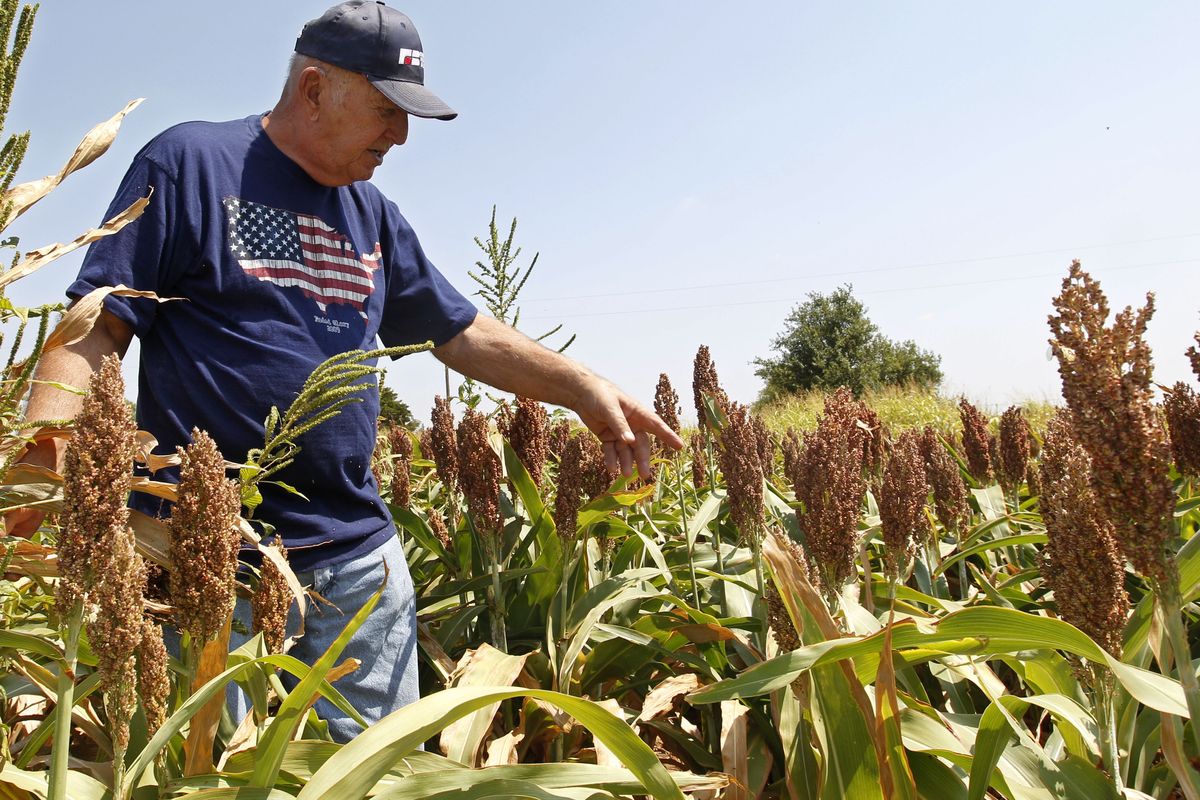EPA seeks cleaner ethanol by using grain sorghum
Crop needs less water, not as relied upon as corn

BISMARCK, N.D. – The federal government is on the verge of approving a grain mainly used as livestock feed to make a cleaner version of ethanol, a decision officials say could give farmers a new moneymaking opportunity, boost the biofuels industry and help the environment.
A plant in western Kansas already is gearing up to take advantage, launching a multimillion-dollar renovation so it can be the first to turn sorghum – a plant similar in appearance to corn – into advanced ethanol. Advanced biofuels result in even less lifetime greenhouse gas production than conventional biofuels, measuring from the time a crop is planted to when the fuel is burned in a vehicle.
The only advanced biofuels in the United States now are sugar cane-based ethanol imported from Brazil and domestic biodiesel, a mixture of petroleum diesel and renewable sources such as soybean oil, said Matt Hartwig, spokesman for the Renewable Fuels Association. Advanced ethanol made from sorghum would give the nation another option as it aims to meet the federal goal of producing 36 billion gallons of renewable fuels per year by 2022.
“We need to continue to expand the base of feedstocks from which we produce biofuel,” Hartwig said. “It’s a good first step.”
Almost all the ethanol produced in the U.S. now is conventional ethanol made from corn starch. Critics of the ethanol industry complain too much corn is going to energy production, resulting in higher food prices for consumers. Corn affects food prices in multiple ways because it’s a widely used ingredient in food manufacturing and it’s used to feed livestock.
More grain sorghum going to fuel production is unlikely to spark the same complaints, because it is not the main ingredient in a number of foods. While it can be used in human food, it’s sold mainly to feed poultry, cattle and other livestock. Sweet sorghum produces edible syrup.
Sorghum also has environmental advantages. It is more tolerant of drought than other crops, including corn, and it produces about the same amount of ethanol per bushel as corn while requiring one-third less water.
It’s less often used than corn in conventional ethanol because corn is much more plentiful, Hartwig said – U.S. corn acres this year outnumber sorghum acres about 16 to one. Also, most ethanol plants are in the Corn Belt focused around Iowa and Illinois, while sorghum is grown primarily in the central and southern Great Plains. Along with Kansas, the top producers are Colorado, Nebraska, Oklahoma, South Dakota and Texas.
The Environmental Protection Agency has concluded that ethanol made from grain sorghum can qualify as an advanced biofuel if it’s made at plants with the proper green technology. The agency has taken public comments and will issue a final determination later. No time frame has been set.
Its approval would make sorghum-based ethanol more attractive because advanced ethanol commands a higher price than conventional, said Chris Cogburn, strategic business director for the National Sorghum Producers.
The question, Hartwig said, is whether ethanol producers are willing to install the equipment needed to produce advanced ethanol from sorghum.
“It has great potential for the future and (is) something the industry will be exploring, but we don’t know about the impact here in the near future,” he said.
Western Plains Energy LLC in Oakley, Kan., which makes conventional ethanol, aims to be the first to upgrade to that technology. The plant is installing equipment that will use methane gas from cattle manure rather than natural gas, cut down on water use and turn waste into a fertilizer. The transition will cost $30 million to $40 million and could be done by the end of the year or early next year.
“We’re going to try to produce over 50 million gallons (of advanced ethanol) per year,” said Curt Sheldon, the plant’s chief accounting officer. “At today’s prices, we could probably pay for the project in two to three years.”
Western Plains plans to buy 17 1/2 million bushels of grain sorghum a year from area farmers, and if more biofuel plants begin using sorghum, it has the potential to create a new and much bigger market for those growing the grain.
“Western Plains will be the first, but from our discussion with ethanol plants they won’t be the last,” said Cogburn, whose group helped push the EPA to recognize grain sorghum as a base for advanced biofuel. The effort also had support from the National Farmers Union.
No groups have stepped forward in opposition to approval.
Western Plains’ switch to sorghum had to do with more than just economics, Sheldon said. Most of the company’s managers and board members are farmers.
“And farmers are the ultimate environmentalists,” he said. “They have to live on the land, work the land, raise their kids out there. We want to do our part.”